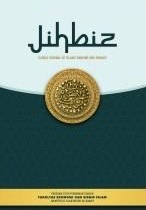Pengaruh Content Marketing dan Brand Awareness Terhadap Costumer Engagement Ditinjau dari Perspektif Ekonomi Islam
DOI:
https://doi.org/10.22373/arp7wt21Keywords:
Content Marketing, Brand Awareness, Costumer Engagement, Kopi Kenangan, Islamic EconomicAbstract
The development of marketing communication has become easier thanks to content marketing and brand awareness strategies, which are widely used by companies. This study aims to analyze the effect of content marketing and brand awareness on customer loyalty of Kopi Memangan in Banda Aceh City from an Islamic economic perspective. The population in this study included all consumers of Kopi Memangan in Banda Aceh City. This research uses quantitative approach. The sample used amounted to 100 respondents with accidental sampling technique. The data analysis technique used is multiple linear regression and hypothesis testing. The results showed that: (1) content marketing and brand awareness simultaneously have a positive and significant effect on customer commitment of memorable coffee in Banda Aceh City; (2) content marketing partially has a positive and significant effect on customer commitment of memorable coffee in Banda Aceh City; and (3) brand awareness also partially has a positive and significant effect on customer commitment of memorable coffee in Banda Aceh City.Downloads
References
Adiwinata, N. N., Sumarwan, U., & Simanjuntak, M. (2021). Faktor-faktor yang memengaruhi perilaku konsumsi kopi di era pandemi covid-19. Jurnal Ilmu Keluarga Dan Konsumen, 14(2), 189–202. https://doi.org/10.24156/jikk.2021.14.2.189
Albanjari, F. R. (2022). Strategi pemasaran syariah dalam upaya meningkatkan penjualan (studi pada UU. Sari Murni /Jenang Tradisional Lasimun Kecamatan Boyolangu Kabupaten Tulungagung). IQTISADIE: Journal of Islamic Banking and Shariah Economy, 2(2), 167–186. https://doi.org/10.36781/iqtisadie.v2i2.274
Alhidayatullah, A. (2024). Customer engagement dalam mobile marketing dan content marketing. Jurnal Inspirasi Ilmu Manajemen, 2(2), 124. https://doi.org/10.32897/jiim.2024.2.2.3404
Amir, A., Mandey, S. L., & Tawas, H. N. (2021). Pengaruh perceived value, brand image terhadap customer loyalty melalui customer engagement sebagai variabel mediasi (studi pada pelangan indihome PT. telkom manado). JMBI UNSRAT (Jurnal Ilmiah Manajemen Bisnis Dan Inovasi Universitas Sam Ratulangi)., 7(3). https://doi.org/10.35794/jmbi.v7i3.31526
Ashari, R. M. H., & Sitorus, O. F. (2023). Pengaruh content marketing terhadap customer engagement kopi kenangan. Jurnal EMT KITA, 7(1), 38–46. https://doi.org/10.35870/emt.v7i1.726
Chayadi, S. A., Loisa, R., & Sudarto, S. (2021). Strategi marketing public relations kopi kenangan dalam membangun brand awareness. Prologia, 5(1), 175. https://doi.org/10.24912/pr.v5i1.10112
Damayanti, N. T., & Juliawati, M. (2024). Pemanfaatan youtube sebagai sumber pembelajaran untuk mahasiswa. E-GiGi, 13(1), 64–71. https://doi.org/10.35790/eg.v13i1.54311
Dewi, L. K. C., Widagdo, S., Martini, L. K. B., & Suardana, I. B. R. (2022). Pengaruh digital marketing dan customer relationship marketing terhadap keputusan wisatawan dengan brand image sebagai variabel mediasi. EKUITAS (Jurnal Ekonomi Dan Keuangan), 6(2). https://doi.org/10.24034/j25485024.y2022.v6.i2.5205
Dumatri, A. C. A., & Indarwati, T. A. (2021). Pengaruh viral marketing dan brand awareness terhadap niat beli pada burger king Indonesia. Jurnal Ilmu Manajemen, 9(2), 478. https://doi.org/10.26740/jim.v9n2.p478-488
Fahimah, M., & Ningsih, L. A. (2022a). Strategi content marketing dalam membangun customer engagement. Benchmark, 3(1), 43–52. https://doi.org/10.46821/benchmark.v3i1.283
Fahimah, M., & Ningsih, L. A. (2022b). Strategi content marketing dalam membangun customer engagement. Benchmark, 3(1), 43–52. https://doi.org/10.46821/benchmark.v3i1.283
Garcia, J. E., Pereira, J. S., & Cairrão, Á. (2021). Social media content marketing strategy for higher education: a case study approach (pp. 493–505). https://doi.org/10.1007/978-981-33-4183-8_39
Gudono. (2011). Analisis data multivariat (Edisi 4). BPFE.
Hartini, S., Fasa, M. I., & Suharto, S. (2022). Digital marketing dalam perspektif ekonomi Islam. Jurnal Ekonomika Dan Bisnis Islam, 5(1), 197–206. https://doi.org/10.26740/jekobi.v5n1.p197-206
Hashim, N., & Hamzah, M. I. (2014). 7P’s: A Literature review of Islamic marketing and contemporary marketing mix. Procedia - Social and Behavioral Sciences, 130, 155–159. https://doi.org/10.1016/j.sbspro.2014.04.019
Hermila, A., Ashari, S. A., Bau, R. T. R. L., & Suhada, S. (2023). Eksplorasi intensitas penggunaan sosial media (studi deskriptif pada mahasiswa teknik informatika UNG). Inverted: Journal of Information Technology Education, 3(2). https://doi.org/10.37905/inverted.v3i2.21172
Homburg, C., Klarmann, M., & Schmitt, J. (2010). Brand awareness in business markets: When is it related to firm performance? International Journal of Research in Marketing, 27(3), 201–212. https://doi.org/10.1016/j.ijresmar.2010.03.004
Huang, R., & Sarigöllü, E. (2012). How brand awareness relates to market outcome, brand equity, and the marketing mix. Journal of Business Research, 65(1), 92–99. https://doi.org/10.1016/j.jbusres.2011.02.003
José-Luis Galdón-Salvador, Ignacio Gil-Pechuán, Sakher-Faisal-Ahmad AlFraihat, & Saeed M. Z. A. Tarabieh. (2024). Effect of Social media influencers on consumer brand engagement and its implications on business decision making. Profesional de La Información, 33(2). https://doi.org/10.3145/epi.2024.0210
Khan, R. U., Salamzadeh, Y., Iqbal, Q., & Yang, S. (2022). The impact of customer relationship management and company reputation on customer loyalty: the mediating role of customer satisfaction. Journal of Relationship Marketing, 21(1), 1–26. https://doi.org/10.1080/15332667.2020.1840904
Kotler, P., & Keller, K. L. (2016). A framework for marketing management. Prentice Hall.
Kotler, P., & Keller, K. L. (2016). Marketing management 16th Edition, in. United State: Pearson.
Markplus, T. (2009). markplus basic pengantar hermawan kartajaya. Essensi.
Moran, G., Muzellec, L., & Johnson, D. (2019). Message content features and social media engagement: evidence from the media industry. Journal of Product & Brand Management, 29(5), 533–545. https://doi.org/10.1108/JPBM-09-2018-2014
Muali, C., & Nisa’, K. (2019). Pemasaran syariah berbantuan media sosial: kontestasi strategis peningkatan daya jual. An-Nisbah: Jurnal Ekonomi Syariah, 6(1), 168–185. https://doi.org/10.21274/an.2019.6.1.168-185
Mukarromah, V. S., & Faletehan, A. F. (2024). Penerapan nilai-nilai pemasaran Islami dalam menarik konsumen di Xifrahijab.id. Jurnal Administrasi Kantor, 12(2), 28. https://doi.org/10.51211/jak.v12i2.3215
Nugraha, B. (2022). Pengembangan uji statistik: Implementasi metode regresi linier berganda dengan pertimbangan uji asumsi klasik. Pradina Pustaka.
Pansari, A., & Kumar, V. (2017). Customer engagement: the construct, antecedents, and consequences. Journal of the Academy of Marketing Science, 45(3), 294–311. https://doi.org/10.1007/s11747-016-0485-6
Radder, L., & Huang, W. (2008). High‐involvement and low‐involvement products. Journal of Fashion Marketing and Management: An International Journal, 12(2), 232–243. https://doi.org/10.1108/13612020810874908
Rahayu, P., & Lilis Sugi Rahayu Ningsih. (2023). Pengaruh customer relationship management dan brand image terhadap patient satisfaction di klinik pratama aulia 1 Jombang. Jurnal Ekonomi Bisnis Dan Manajemen, 1(4), 68–79. https://doi.org/10.59024/jise.v1i4.329
Roscoe, D. F. (1975). New methods for the derivation of stable difference representations for differential equations. IMA Journal of Applied Mathematics, 16(3), 291–301. https://doi.org/10.1093/imamat/16.3.291
Santoso, S. (2016). Panduan lengkap SPSS versi 23. Elex Media Komputindo.
Saputra, A., Utari, D., & Furqon, M. (2024). Analisis strategi content marketing dalam menciptakan customer engagement (studi pada umkm manda cake). Jembatan (Jurnal Ekonomi, Manajemen, Bisnis, Auditing, Dan Akuntansi), 8(2), 122–130. https://doi.org/10.54077/jembatan.v8i2.167
Sya’idah, E. H., & Jauhari, T. (2022). Pengaruh content marketing terhadap customer engagement pada testoefl.id. Jurnal Ecoment Global, 7(2). https://doi.org/10.35908/jeg.v7i2.2193
Vivek, S. D., Beatty, S. E., & Morgan, R. M. (2012). Customer engagement: exploring customer relationships beyond purchase. Journal of Marketing Theory and Practice, 20(2), 122–146. https://doi.org/10.2753/MTP1069-6679200201
Wardani, S. (2023). strategi komprehensif untuk pencapaian tujuan bisnis dalam bauran komunikasi pemasaran. Jurnal Ekonomi Dan Bisnis, 3(1), 39–47. https://doi.org/10.56145/ekonomibisnis.v3i1.152
Waworuntu, A. Y., & Amri, A. (2024). Insights and strategies for effective islamic marketing in diverse cultural contexts. Center of Economic Students Journal, 7(3), 160–174.
Yu, X., Yuan, C., Kim, J., & Wang, S. (2021). A new form of brand experience in online social networks: An empirical analysis. Journal of Business Research, 130, 426–435. https://doi.org/10.1016/j.jbusres.2020.02.011
Yuliana, Y., & Ardansyah, A. (2022). analisis strategi pemasaran untuk meningkatkan penjualan minuman kedai kopi square di Kota Bandar Lampung. SINOMIKA Journal: Publikasi Ilmiah Bidang Ekonomi Dan Akuntansi, 1(3), 309–320. https://doi.org/10.54443/sinomika.v1i3.265
Yunita, D., Widad, A., Diah, Y. M., & Farla, W. (2021). pembuatan content marketing sebagai strategi menumbuhkan brand awareness bagi pelaku usaha di era pandemi covid-19. Sricommerce: Journal of Sriwijaya Community Services, 2(2), 89–96. https://doi.org/10.29259/jscs.v2i2.38
Downloads
Published
Issue
Section
License
Copyright (c) 2025 Junia Farma, Zafira Natasyrah, Zafira Natasyrah, Fithriady Fithriady, Fithriady Fithriady

This work is licensed under a Creative Commons Attribution-ShareAlike 4.0 International License.
Jihbiz : Global Journal of Islamic Banking and Finance Education uses license CC-BY-SA or an equivalent license as the optimal license for the publication, distribution, use, and reuse of scholarly works. This license permits anyone to compose, repair, and make derivative creation even for commercial purposes, as long as appropriate credit and proper acknowledgement to the original publication from Jihbiz : Global Journal of Islamic Banking and Finance is made to allow users to trace back to the original manuscript and author. Readers are also granted full access to read and download the published manuscripts, reprint and distribute the manuscript in any medium or format.








